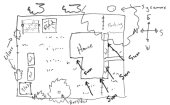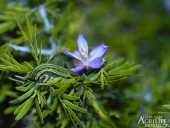
 4
4




 2
2




"When the whole world is running towards a cliff, he who is running in the opposite direction appears to have lost his mind." C.S. Lewis
Visit https://themaineingredient.com for organic, premium dried culinary herbs that are grown, processed, and packaged in the USA.
 6
6




 4
4




"In action, watch the timing."-Tao Te Ching
"Jus' Press"-Ledward Kaapana
 4
4




 4
4




 2
2




C Shahid wrote:My thought is to check for any utility right of way on your property report. It's something to consider anytime you plant trees in your front yard. In my area, if a utility company ever needs to do work, they have the right to cut down any trees in the way and do not need to compensate you for them. You'll have to check if that's true for your property.
 1
1




M.K. Dorje Sr. wrote:I'm in agreement with Cristobal, especially #3- "try to protect the trees from excessive sun" and #4- "mulch a lot". I might add that most young trees in your hot climate require protection on their trunks from sun burn and sun scald, as well as borers. I advise that after planting, try painting the trunks from 1 inch below the soil line to the bottom branches with white latex paint or a similar product designed to protect the young trees. Wood chips from hardwoods make great mulch.
I might add that you might try consulting with your local extension agent or fruit tree nursery person about the best varieties for your area. You want trees (and rootstocks) that are low chill, bear lots of delicious fruit, can take the heat, pollinate themselves (or each other) and resist local diseases. For example, in this area (Oregon), I always advise that people buy peach leaf curl resistant varieties like Indian Blood and Frost. Don't just buy whatever the local supermarket or big box store is selling, try to buy from a reputable, locally-owned nursery or go to a local fruit tree propagation fair/seed swap event. The people at these events are always super helpful.
Good luck and have fun!
 2
2




Matt Gonzalez wrote:
C Shahid wrote:My thought is to check for any utility right of way on your property report. It's something to consider anytime you plant trees in your front yard. In my area, if a utility company ever needs to do work, they have the right to cut down any trees in the way and do not need to compensate you for them. You'll have to check if that's true for your property.
Thanks for the advice, luckily the power lines are on the other side of our home.
 3
3




Passionate researcher and hands-on gardener
Visit my blog: for Sustainable Gardening Tips
 1
1




Nirmal Vidura wrote: For the fruit trees, consider spacing them at least 15-20 feet apart to allow for growth and airflow.
 1
1




M.K. Dorje Sr. wrote:I might add that you might try consulting with your local extension agent or fruit tree nursery person about the best varieties for your area. You want trees (and rootstocks) that are low chill, bear lots of delicious fruit, can take the heat, pollinate themselves (or each other) and resist local diseases.

 4
4





How Permies works: https://permies.com/wiki/34193/permies-works-links-threads
My projects on Skye: The tree field, Growing and landracing, perennial polycultures, "Don't dream it - be it! "




Nancy Reading wrote:Hi Matt welcome to permies! I'm sure the answers you've already had for the trees are most useful for your climate. I'll just add making sure that the reason the existing trees died won't affect the new ones. There are lots of reasons they could have died, including being poorly looked after once planted. I like to plant trees as young as possible - that way they have a chance to get established well without staking. Your conditions are very different though!
You ask about how to incorporate the rest of the garden in your design and that is a big question which is where permaculture as a design system really comes into it's own. Without knowing your details I can only suggest looking at where the sun and wind and water come from now, how the trees may affect these things. Think about pollinators and predatory insects to support your trees, can you plant flowers around them to support a healthy population (have a search for "plant guilds" to get some suggestions perhaps)? Where are you needing to or wanting to walk, how will you harvest and store the fruit? There will be a lot of space between the trees while they are growing, how can you use that in a beneficial way?
I hope this helps and that your trees thrive
















How Permies works: https://permies.com/wiki/34193/permies-works-links-threads
My projects on Skye: The tree field, Growing and landracing, perennial polycultures, "Don't dream it - be it! "
 1
1




Matt Gonzalez wrote:[That is my little predicament as this area will run north to south and only be sheltered in the eastern side by our home.





ah

|
Could you hold this puppy for a sec? I need to adjust this tiny ad:
The new purple deck of permaculture playing cards
https://www.kickstarter.com/projects/paulwheaton/garden-cards
|






